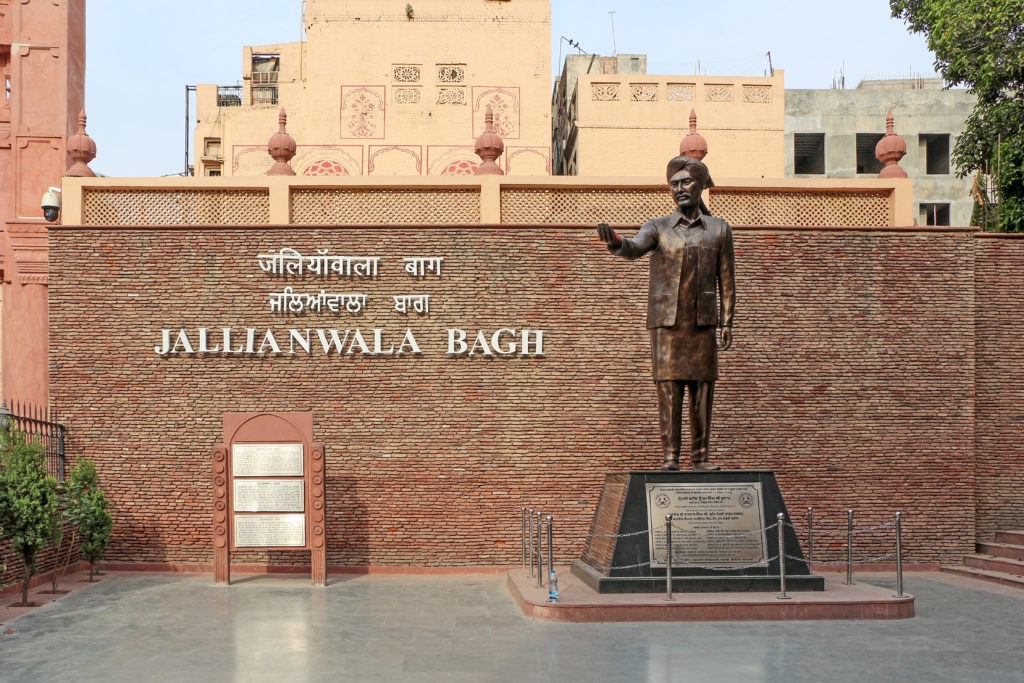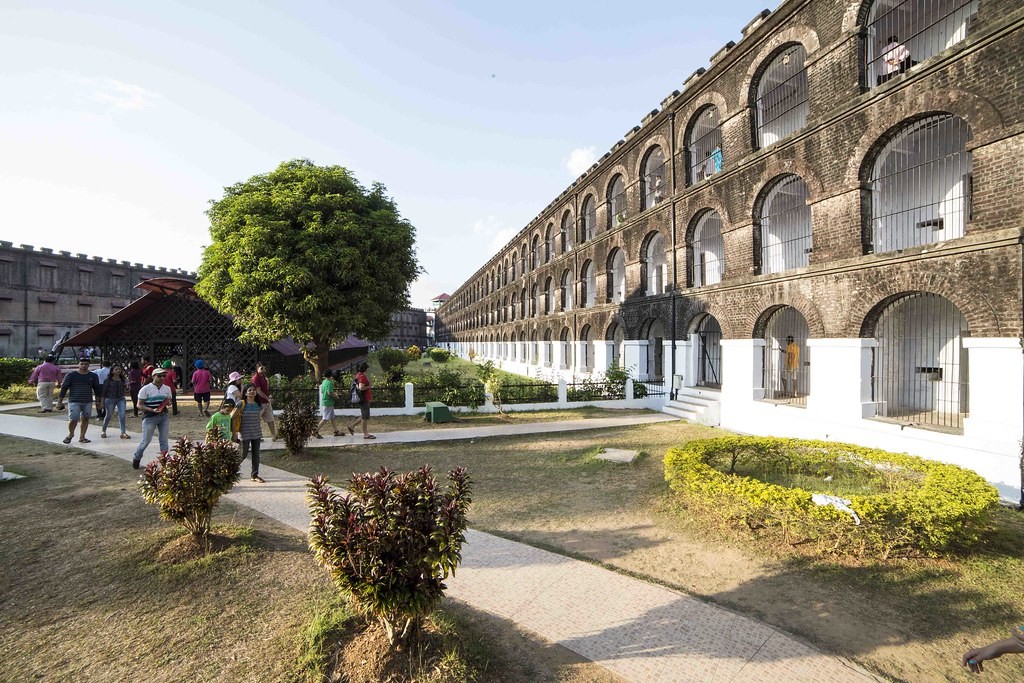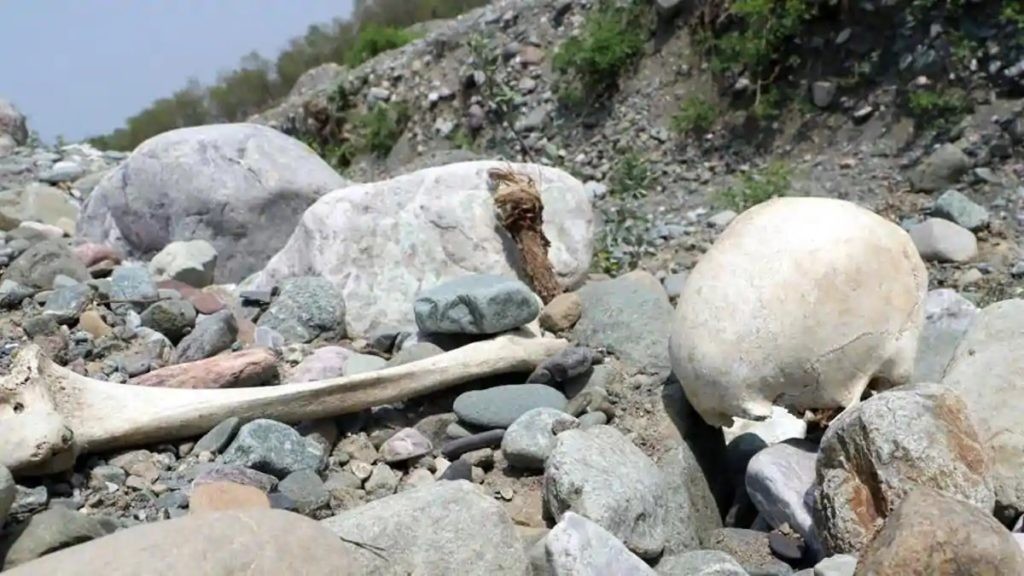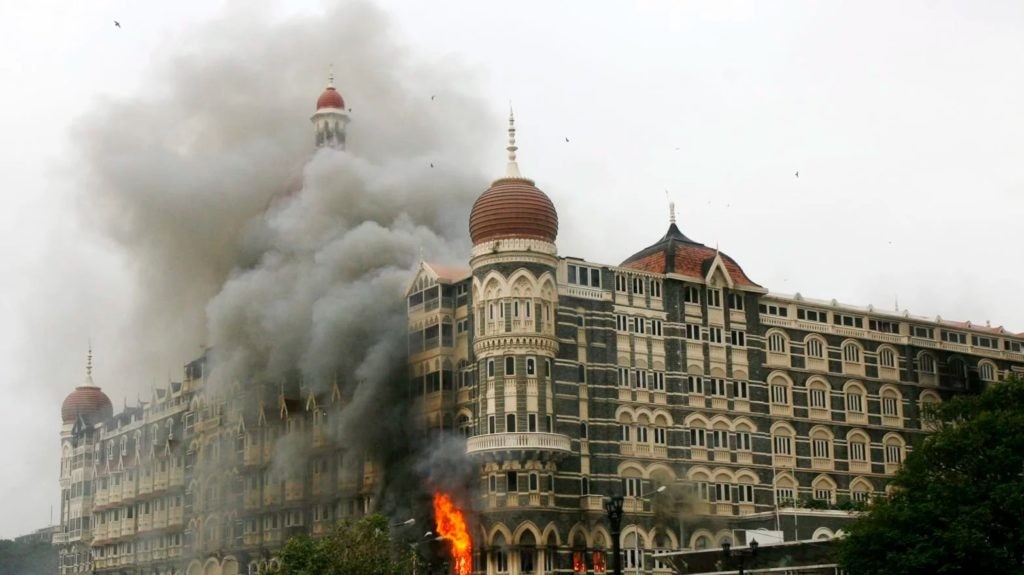Dark Tourism In India offers a unique lens through which to explore the nation’s complex history and cultural heritage. SIXT.VN provides travelers with the resources to navigate these sites respectfully and safely. Unlock India’s past with curated heritage tours, secure transportation, and comfortable accommodations for a meaningful and enlightening journey.
1. What Exactly is Dark Tourism and Why is it Becoming More Popular in India?
Dark tourism, also known as grief tourism or black tourism, involves traveling to sites associated with death, suffering, disaster, or historical tragedies. It is gaining popularity in India as travelers seek more profound and authentic experiences, moving beyond traditional sightseeing to engage with the country’s complex past and cultural heritage. According to research from the Indian Institute of Tourism and Travel Management (IITTM) in 2022, dark tourism provides opportunities for education, reflection, and remembrance, fostering a deeper understanding of human resilience and historical events.
1.1. Why the Growing Fascination with Dark Tourism?
The rise of dark tourism reflects a broader cultural shift towards seeking authenticity and confronting uncomfortable truths. As travelers become more sophisticated and seek deeper connections with the places they visit, sites of tragedy and historical significance offer a powerful way to engage with the past and reflect on the human condition. Television shows and documentaries, like “The Dark Tourist” and coverage of events like the Chernobyl disaster, have also contributed to its popularity by raising awareness and sparking curiosity.
1.2. What Does Dark Tourism Offer That Regular Tourism Doesn’t?
Dark tourism provides an immersive and educational experience that traditional tourism often lacks. While regular tourism might focus on leisure and entertainment, dark tourism encourages visitors to confront difficult histories, reflect on human suffering, and learn from past mistakes. This type of travel can foster empathy, promote understanding, and challenge perspectives, creating a more meaningful and impactful travel experience.
1.3. How Does India’s History Contribute to its Dark Tourism Potential?
India’s rich and often turbulent history, marked by colonialism, wars, natural disasters, and social injustices, provides a vast landscape for dark tourism. Sites like Jallianwala Bagh, Cellular Jail, and the remnants of the Bhopal gas tragedy offer tangible connections to significant events that have shaped the nation. These sites allow visitors to engage with India’s past in a profound way, honoring the memories of those who suffered and gaining a deeper understanding of the country’s resilience.
2. Jallianwala Bagh, Amritsar: What Happened and Why is it a Key Dark Tourism Site?
Jallianwala Bagh in Amritsar is a memorial and garden marking the site of the Jallianwala Bagh massacre. On April 13, 1919, British troops opened fire on a peaceful gathering of unarmed Indians, killing hundreds. It is a key dark tourism site due to its significance as a symbol of colonial oppression and the struggle for Indian independence. According to historical records from the Amritsar District Gazetteer, the massacre was a turning point in the Indian independence movement, galvanizing support for self-rule.
 JALLIANWALA BAGH, AMRITSAR (PUNJAB)
JALLIANWALA BAGH, AMRITSAR (PUNJAB)
2.1. What Can Visitors See at Jallianwala Bagh Today?
Today, Jallianwala Bagh serves as a memorial and museum. Visitors can see the bullet marks on the walls, the well into which many jumped to escape the gunfire, and a memorial flame that burns continuously. The site is preserved to remind visitors of the tragedy and to honor the victims.
2.2. How Does Visiting Jallianwala Bagh Help Understand India’s Struggle for Independence?
Visiting Jallianwala Bagh provides a visceral understanding of the brutality of colonial rule and the sacrifices made by Indians in their fight for independence. The site evokes a sense of sorrow and outrage, prompting reflection on the injustices of the past and the importance of preserving freedom and human rights.
2.3. How Can Tourists Respectfully Visit Jallianwala Bagh?
To respectfully visit Jallianwala Bagh, tourists should maintain silence, avoid disruptive behavior, and dress modestly. It is essential to read the historical information provided at the site and to reflect on the significance of the events that occurred there. Refrain from taking selfies or treating the site as a mere photo opportunity.
3. Indus Valley Civilization Sites: What Dark Secrets Do These Ancient Ruins Hold?
The Indus Valley Civilization sites, such as Mohenjo-daro and Harappa, hold dark secrets related to their mysterious decline and abandonment. These Bronze Age urban centers flourished for centuries before their sudden collapse around 1900 BCE. Theories for their demise include climate change, environmental degradation, and invasion, revealing the fragility of even the most advanced societies. Archaeological research from the Archaeological Survey of India (ASI) indicates that these cities provide insight into the impact of environmental factors on societal collapse.
3.1. What Mysteries Surround the Decline of the Indus Valley Civilization?
The decline of the Indus Valley Civilization remains a topic of intense debate among historians and archaeologists. While the exact causes are unknown, several factors are believed to have contributed, including:
- Climate Change: Shifts in monsoon patterns and increasing aridity may have led to agricultural decline and resource scarcity.
- Environmental Degradation: Overexploitation of natural resources, such as deforestation and soil erosion, may have undermined the civilization’s sustainability.
- Invasion: Some scholars suggest that invasions by Indo-Aryan tribes may have played a role, although this theory is not universally accepted.
3.2. What Can Be Learned From the Archaeological Findings at These Sites?
The archaeological findings at Indus Valley Civilization sites provide valuable insights into the daily lives, social structures, and technological achievements of this ancient society. Excavations have revealed:
- Advanced Urban Planning: Well-planned cities with grid-like layouts, sophisticated drainage systems, and standardized brick sizes.
- Trade Networks: Evidence of extensive trade networks with Mesopotamia and other regions, indicating economic prosperity.
- Art and Craftsmanship: Exquisite pottery, jewelry, and seals, showcasing the artistic skills of the Indus people.
3.3. How Do These Sites Reflect the Theme of Dark Tourism?
The Indus Valley Civilization sites fit into the theme of dark tourism due to the sense of mystery and loss surrounding their decline. The ruins evoke a sense of the transience of human civilization and the potential for even the most advanced societies to collapse. Visiting these sites prompts reflection on the challenges facing modern societies, such as climate change and resource management.
4. Cellular Jail, Andaman & Nicobar Islands: What Horrors Occurred at “Kala Pani?”
Cellular Jail, located in the Andaman & Nicobar Islands, is a grim reminder of the brutal treatment of Indian freedom fighters by the British colonial government. Known as “Kala Pani” (black waters), this prison was designed to isolate and torture political prisoners, many of whom died from starvation, disease, and inhumane treatment. Historical accounts from the National Archives of India document the harsh conditions and high mortality rates within the jail.
 CELLULAR JAIL, ANDAMAN & NICOBAR ISLAND (KALA PANI)
CELLULAR JAIL, ANDAMAN & NICOBAR ISLAND (KALA PANI)
4.1. What Made Cellular Jail So Feared Among Indian Freedom Fighters?
Cellular Jail was particularly feared due to its remote location, harsh conditions, and the systematic torture inflicted on prisoners. The jail’s design, with individual cells radiating from a central tower, ensured complete isolation, depriving prisoners of human contact and driving many to despair.
4.2. What Were the Living Conditions Like in Cellular Jail?
Living conditions in Cellular Jail were appalling:
- Overcrowding: Cells were small and cramped, often housing multiple prisoners.
- Poor Sanitation: Lack of proper sanitation led to the spread of disease.
- Forced Labor: Prisoners were subjected to hard labor, such as breaking rocks and extracting oil, often without adequate food or water.
- Torture: Inmates faced cruel punishments, including whipping, solitary confinement, and starvation.
4.3. How Does Visiting Cellular Jail Honor the Memory of Those Who Suffered There?
Visiting Cellular Jail serves as a tribute to the courage and sacrifice of the Indian freedom fighters who endured immense suffering in their struggle for independence. The site allows visitors to reflect on the horrors of colonial oppression and to appreciate the value of freedom and human rights.
5. Union Carbide Factory, Bhopal: What Lasting Scars Did the Gas Tragedy Leave?
The Union Carbide Factory in Bhopal is a haunting reminder of the Bhopal gas tragedy, one of the worst industrial disasters in history. In December 1984, a leak of methyl isocyanate (MIC) gas from the factory killed thousands of people and left hundreds of thousands with long-term health problems. The site stands as a symbol of corporate negligence and the devastating consequences of industrial accidents. According to reports from the Bhopal Medical Appeal, the tragedy continues to affect the health and well-being of the local population.
5.1. What Were the Immediate and Long-Term Impacts of the Bhopal Gas Tragedy?
The Bhopal gas tragedy had immediate and long-term impacts:
- Immediate Deaths: Thousands of people died within days of the gas leak due to respiratory failure and other complications.
- Long-Term Health Problems: Survivors continue to suffer from chronic respiratory illnesses, neurological disorders, and birth defects.
- Environmental Contamination: The site remains heavily contaminated with toxic chemicals, posing ongoing risks to human health and the environment.
5.2. How Does the Abandoned Factory Serve as a Reminder of Industrial Negligence?
The abandoned Union Carbide Factory serves as a stark reminder of the dangers of industrial negligence and the importance of corporate accountability. The site highlights the need for strict safety regulations, responsible waste management, and effective disaster response plans to prevent similar tragedies in the future.
5.3. What Can Be Done to Help the Survivors of the Bhopal Gas Tragedy?
Efforts to help the survivors of the Bhopal gas tragedy include:
- Medical Care: Providing access to quality medical care for those suffering from chronic health problems.
- Rehabilitation: Offering rehabilitation services to help survivors cope with the physical and psychological trauma of the tragedy.
- Environmental Remediation: Cleaning up the contaminated site to reduce the risks to human health and the environment.
- Justice and Compensation: Ensuring that survivors receive fair compensation for their losses and holding those responsible for the tragedy accountable.
6. Kuldhara Village, Rajasthan: What Led to the Mysterious Abandonment of This Village?
Kuldhara Village in Rajasthan is an abandoned settlement with a mysterious past. According to local legends, the village was inhabited by Paliwal Brahmins who abandoned it overnight to escape the tyranny of a local ruler who sought to marry the village chief’s daughter against her will. The village is believed to be cursed, and no one has been able to resettle it since. While the exact reasons for its abandonment remain a mystery, Kuldhara attracts visitors drawn to its eerie atmosphere and intriguing folklore. The Rajasthan Department of Tourism recognizes the site as a place of historical interest and cultural significance.
6.1. What Are the Different Theories Surrounding the Abandonment of Kuldhara?
Theories surrounding the abandonment of Kuldhara include:
- Oppression by the Ruler: The most popular theory claims that the villagers fled to avoid the unwanted advances of a local ruler.
- Water Scarcity: Some believe that a prolonged drought or depletion of groundwater resources forced the villagers to relocate.
- Earthquake: A seismic event could have damaged the village and made it uninhabitable.
- Curse: According to local legends, the villagers cursed Kuldhara as they left, ensuring that no one would ever be able to resettle it.
6.2. How Does the Legend of Kuldhara Add to Its Appeal as a Dark Tourism Destination?
The legend of Kuldhara adds to its appeal as a dark tourism destination by creating an atmosphere of mystery and intrigue. The idea of a village abandoned overnight due to a curse captures the imagination and prompts visitors to ponder the unknown.
6.3. What Precautions Should Tourists Take When Visiting Kuldhara?
When visiting Kuldhara, tourists should:
- Respect Local Customs: Be mindful of local traditions and avoid disrespectful behavior.
- Stay on Marked Paths: Stick to designated paths to avoid damaging the ruins.
- Carry Water and Snacks: The village is remote, so it’s essential to bring your own supplies.
- Avoid Visiting at Night: The village is said to be haunted, and it’s best to avoid visiting after dark.
7. Roopkund Lake, Uttarakhand: Why is it Called the “Lake of Skeletons?”
Roopkund Lake, located in the Himalayas of Uttarakhand, is known as the “Lake of Skeletons” due to the hundreds of human skeletons found scattered around its shores. Scientists believe that the skeletons date back to the 9th century and belong to a group of people who died in a sudden and severe hailstorm. The lake’s remote location and macabre history make it a popular destination for adventure tourists. According to a study published in Nature Communications, DNA analysis suggests that the skeletons belong to multiple groups of people, including a group of Mediterranean descent.
 ROOPKUND, UTTARAKHAND
ROOPKUND, UTTARAKHAND
7.1. What Explanations Have Been Offered for the Presence of Skeletons at Roopkund?
Explanations for the presence of skeletons at Roopkund include:
- Hailstorm: The most widely accepted theory is that the individuals were caught in a severe hailstorm and died from head injuries.
- Epidemic: Some speculate that an epidemic may have wiped out a group of travelers.
- Landslide: A landslide could have buried a group of people near the lake.
7.2. How Does the High Altitude Contribute to the Dark Tourism Aspect of Roopkund?
The high altitude of Roopkund (over 16,000 feet) contributes to its dark tourism aspect by:
- Creating a Sense of Isolation: The remote location and challenging terrain add to the feeling of isolation and vulnerability.
- Preserving the Skeletons: The cold, dry climate helps to preserve the skeletons, making them a visible reminder of death.
- Enhancing the Mystique: The harsh environment adds to the mystery and intrigue of the lake.
7.3. What Should Trekkers Know Before Visiting Roopkund?
Trekkers planning to visit Roopkund should:
- Be Physically Fit: The trek is challenging and requires a good level of fitness.
- Acclimatize to the Altitude: Spend time acclimatizing to the high altitude to avoid altitude sickness.
- Hire a Guide: It’s recommended to hire a local guide who knows the area well.
- Pack Appropriately: Bring warm clothing, sturdy hiking boots, and rain gear.
- Respect the Environment: Avoid littering and disturbing the natural environment.
8. Taj Mahal Hotel, Mumbai: How Does It Symbolize Resilience After the 2008 Terrorist Attacks?
The Taj Mahal Palace Hotel in Mumbai is a symbol of resilience after the 2008 terrorist attacks. The hotel was one of the primary targets of the attacks, and many guests and staff members were killed or injured. Despite the devastation, the hotel was rebuilt and reopened, demonstrating the city’s determination to overcome adversity. According to interviews with hotel staff, the reopening of the Taj Mahal Palace symbolized the triumph of the human spirit over terrorism.
 TAJ PALACE HOTEL, MUMBAI
TAJ PALACE HOTEL, MUMBAI
8.1. What Happened at the Taj Mahal Hotel During the 2008 Mumbai Attacks?
During the 2008 Mumbai attacks, terrorists stormed the Taj Mahal Palace Hotel, taking hostages and engaging in a prolonged gun battle with security forces. The hotel suffered extensive damage, and many people were killed or injured.
8.2. How Did the Hotel’s Reopening Contribute to the City’s Healing Process?
The reopening of the Taj Mahal Palace Hotel contributed to Mumbai’s healing process by:
- Symbolizing Resilience: The reopening demonstrated the city’s determination to rebuild and recover from the attacks.
- Restoring Confidence: The reopening helped to restore confidence in the city’s safety and security.
- Honoring the Victims: The reopening served as a tribute to the victims of the attacks.
8.3. What Memorials or Tributes Exist at the Hotel to Remember the Victims?
The Taj Mahal Palace Hotel features several memorials and tributes to remember the victims of the 2008 Mumbai attacks, including:
- Memorial Plaque: A plaque listing the names of those who died in the attacks.
- Remembrance Garden: A garden dedicated to the memory of the victims.
- Photographs: Photographs of the hotel before and after the attacks, showcasing its resilience.
9. What Ethical Considerations Should Tourists Keep in Mind When Visiting Dark Tourism Sites in India?
When visiting dark tourism sites in India, it’s essential to consider the ethical implications and approach these locations with respect and sensitivity. These sites often represent profound loss, suffering, and historical injustices, and it’s crucial to honor the memory of those affected. According to guidelines from the International Dark Tourism Association, respect, education, and preservation should be at the forefront of any dark tourism experience.
9.1. How Can Tourists Show Respect for the Victims at Dark Tourism Sites?
Tourists can show respect for the victims at dark tourism sites by:
- Maintaining Silence: Avoiding loud or disruptive behavior.
- Dressing Modestly: Wearing appropriate clothing that is respectful of the site’s significance.
- Refraining from Selfies: Avoiding taking selfies or posing for photos that trivialize the site.
- Reading Information: Taking the time to read and understand the historical context of the site.
- Avoiding Souvenirs: Refraining from purchasing souvenirs that exploit the tragedy.
9.2. What Role Does Education Play in Dark Tourism?
Education plays a crucial role in dark tourism by:
- Providing Context: Helping visitors understand the historical, social, and political context of the events that occurred at the site.
- Promoting Reflection: Encouraging visitors to reflect on the human condition and the consequences of violence and injustice.
- Fostering Empathy: Helping visitors develop empathy for those who suffered at the site.
- Preventing Trivialization: Ensuring that the site is treated with respect and sensitivity.
9.3. How Can Dark Tourism Contribute to the Preservation of Historical Sites?
Dark tourism can contribute to the preservation of historical sites by:
- Generating Revenue: Providing funds for the maintenance and preservation of the site.
- Raising Awareness: Increasing awareness of the site’s significance and the need to protect it.
- Encouraging Responsible Tourism: Promoting responsible tourism practices that minimize the impact on the site and its surroundings.
10. How Can SIXT.VN Enhance Your Dark Tourism Experience in India?
SIXT.VN can enhance your dark tourism experience in India by providing convenient and reliable services that ensure a safe, comfortable, and respectful journey. From airport transfers to curated heritage tours, SIXT.VN offers the resources to navigate these sensitive sites with ease and understanding.
10.1. What Services Does SIXT.VN Offer to Travelers Interested in Dark Tourism?
SIXT.VN offers a range of services to travelers interested in dark tourism, including:
- Airport Transfers: Safe and reliable transportation from the airport to your hotel.
- Hotel Bookings: A wide selection of hotels to suit your budget and preferences.
- Curated Tours: Guided tours of dark tourism sites with knowledgeable local guides.
- Private Transportation: Hire a private car and driver for a personalized and flexible experience.
- Travel Insurance: Comprehensive travel insurance to protect you against unforeseen events.
10.2. How Can SIXT.VN Help Ensure a Respectful and Informative Visit to These Sites?
SIXT.VN can help ensure a respectful and informative visit to dark tourism sites by:
- Partnering with Knowledgeable Guides: Working with local guides who are experts in the history and culture of the sites.
- Providing Educational Materials: Offering access to educational materials that provide context and information about the sites.
- Promoting Responsible Tourism Practices: Encouraging responsible tourism practices that minimize the impact on the sites and their surroundings.
10.3. What are the Benefits of Booking Your Dark Tourism Trip to India with SIXT.VN?
Booking your dark tourism trip to India with SIXT.VN offers several benefits:
- Convenience: Easily book all your travel needs in one place.
- Reliability: Trustworthy and reliable services.
- Safety: Ensuring your safety and security throughout your trip.
- Expertise: Access to knowledgeable guides and local experts.
- Support: 24/7 customer support to assist you with any issues or concerns.
Ready to explore the captivating and thought-provoking dark tourism sites in India? Let SIXT.VN be your guide to a meaningful and enlightening journey. Book your airport transfer, hotel, and curated tour today and discover the hidden stories of India’s past. Visit SIXT.VN or contact our hotline/WhatsApp at +84 986 244 358 to start planning your adventure. Our address is 260 Cau Giay, Hanoi, Vietnam.
FAQ: Your Questions About Dark Tourism in India Answered
- What is the definition of dark tourism?
Dark tourism involves traveling to sites associated with death, suffering, disaster, or historical tragedies, providing opportunities for reflection and education. - Why is dark tourism becoming more popular?
Dark tourism is gaining popularity as travelers seek authentic experiences, engage with complex histories, and reflect on the human condition. - Is dark tourism ethical?
Dark tourism can be ethical if approached with respect, sensitivity, and a focus on education and preservation. - What are some examples of dark tourism sites in India?
Examples include Jallianwala Bagh, Cellular Jail, the Union Carbide Factory in Bhopal, and Roopkund Lake. - How can I ensure a respectful visit to dark tourism sites?
Maintain silence, dress modestly, avoid selfies, read information, and refrain from purchasing exploitative souvenirs. - What role does education play in dark tourism?
Education provides context, promotes reflection, fosters empathy, and prevents trivialization of tragic events. - How can dark tourism contribute to the preservation of historical sites?
It generates revenue, raises awareness, and encourages responsible tourism practices. - What services does SIXT.VN offer for dark tourism in India?
SIXT.VN offers airport transfers, hotel bookings, curated tours, private transportation, and travel insurance. - How can SIXT.VN help ensure a respectful visit to these sites?
SIXT.VN partners with knowledgeable guides, provides educational materials, and promotes responsible tourism practices. - What are the benefits of booking with SIXT.VN?
Benefits include convenience, reliability, safety, expertise, and 24/7 customer support.



